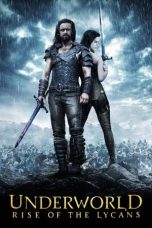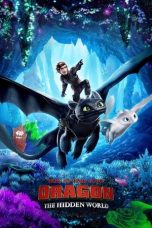- Source: Rain World
Rain World is a 2017 survival platform game developed by Videocult and published by Adult Swim Games and Akupara Games for PlayStation 4 and Microsoft Windows in March 2017, and for Nintendo Switch in late 2018. Players assume control of a "slugcat", an elongated felid-like rodent, and are tasked with survival in a derelict and hostile world.
The game features a simulated ecosystem. The slugcat uses debris as weapons to escape predators, scavenges for food, and tries to reach safe hibernation rooms before the deadly torrential rain arrives. The game's developers intended to give players little explicit guidance on how to survive so that they would feel like "A rat living on subway tracks," learning to survive in an environment without understanding its higher-level function.
Rain World received mixed reviews from critics, who praised its art design and procedural animation but criticized its brutal difficulty, inconsistent save points, and imprecise controls. Some of these criticisms were addressed with later updates. Despite the aforementioned mixed reviews, the game garnered a cult following.
In January 2023, a downloadable content pack titled Rain World: Downpour was released for PC. Downpour was released for Switch, PlayStation, and Xbox on July 11, 2023. The expansion pack received generally positive reviews from critics.
Gameplay
The slugcat can use spears and debris to defend itself from predators in the hostile, ruined, and obtuse 2D world. The player is given little explicit guidance and is free to explore the world in any direction by entering pipes and crawling through passages that span across over 1,600 static screens that each spawn their creatures in set locations. These creatures can then move freely around the region. The slugcat can jump, swim, and climb poles to avoid enemies while foraging for sparse food, which is used to hibernate in scarce, designated safe rooms called shelters.
Hibernating resets the time limit and saves the player's progress. If the player does not reach a shelter before the end of the day, rain will come, crushing the slugcat or causing them to drown in one of the many now-flooded rooms. Additionally, if the slugcat does not eat sufficient food by the end of the day, the game will not save, and the slugcat will wake up in starvation mode. In starvation mode, the slugcat is much slower, does less damage when throwing spears, and faints if it jumps too much. Starvation mode can be exited mid-day by completely filling up the hunger bar, but if the slugcat doesn't fill up the hunger bar by the end of the said day, it will starve to death when it tries to hibernate.
Upon death, the slugcat returns to the last save point. The player also loses one karma, which is indicated at the bottom of the screen. Karma is gained upon successfully hibernating, and the player can shield their current karma level by eating a yellow karma flower. The flower appears in set locations around the map and is re-planted wherever the slugcat dies while under its effects. The player needs to meet a specific karma level to go through karma gates, which lie at the borders of every region in the game.
Predators range from camouflaged plants to large vultures to Komodo dragon-like lizards and large aquatic creatures. Many enemies can incapacitate the slugcat in one hit, and some species have different variations, such as the different colors of lizards, which all have unique characteristics. Creatures spawn from dens in set locations and can move freely throughout the region, meaning the player is sometimes faced with problems that they can't avoid. All creatures in the game possess dynamic AI and exist in the game's world perpetually, even when not on the same screen as the player. Players are expected to mainly evade enemies, but do need to experiment with spears to climb walls and knock fruit off of vines. It is possible to kill predators by repeatedly hitting certain parts of them with spears, though attacking them is mainly used as a way to ward them off. However, killing creatures becomes almost a requirement in the base game's hardest campaign, Hunter, where the slugcat is a carnivore and must eat the flesh of other creatures to get meaningful amounts of food. The slugcat, if holding an object in each hand, can swap their places by pressing the grab button twice. It can also eat mushrooms, which grant status effects, such as faster reaction times (shown in-game as time slowing down) and increasing how far the slugcat jumps.
The player can choose between two campaigns at the start: Monk and Survivor. As Monk, creatures are less aggressive and the slugcat needs less food to hibernate. Beating either Monk or Survivor unlocks the third character, Hunter, with a difficult campaign featuring more powerful and hostile creatures, as well as a 20-day time limit to beat the game. Monk and Hunter were added in the 1.5 update, and Monk was created to address concerns about the game's difficulty. The 1.5 update also added a local multiplayer arena mode and a sandbox mode where players can spawn objects and creatures from the game. The game offers very little to guide the player aside from the overseer, who gives some hints about where to find nearby shelters and lore-related events. The player can also view a map to check their location in the vast in-game world.
= Downpour
=The Downpour expansion adds five new campaigns, which are set during different points in the timeline, and enables local multiplayer for story modes. Each campaign features a new slugcat with new abilities. Spearmaster can create an infinite amount of spears at will, but throwing them at other creatures is the only way that it can eat. Rivulet is nearly twice as fast as Survivor, has a higher jump and overall increased agility, and is a much more adept swimmer, but has extremely short days. Gourmand has access to a crafting system and can damage creatures by falling or sliding into them, but excessive physical activities cause them to enter a weak-winded state where they must stop to catch their breath. Artificer can double jump and create explosives, but can't hold their breath underwater and is locked at the lowest karma level, forcing them to use other methods to pass karma gates. Saint has a grappling tongue that gives them large amounts of mobility, but is unable to throw spears or eat meat. Downpour also adds three new game modes. The first is Safari mode, which lets players freely observe the world without worry and control any living creature within it. After that is Challenge mode, which provides 70 unique scored challenges with preset conditions. Finally, there is Expedition, which is a semi-roguelike mode with random missions that award experience points upon completion. Downpour's release was accompanied by the free Rain World Remix upgrade, which added accessibility options, ways to customize game difficulty, and better modding support.
Plot
Rain World's setting is destroyed by ecological catastrophe and illustrated in pixel art. Its story is communicated through details in the environment, dreams that the slugcat can have during hibernation, and holograms from the worm-like overseer that guides the player. In-game, the player assumes the role of a slugcat, who wakes up in an abandoned, desolate world. They can choose to play as the Monk, the Survivor, or the Hunter, each of which has a different narrative and set of abilities. If they select the Monk or the Survivor, their plot follows the same basic outline. When a group of slugcats is caught off-guard by the rain, the Survivor is flushed into a pit, becoming separated from the others. The Monk is the Survivor's sibling and chases after the Survivor.
Eventually, the slugcat reaches Five Pebbles, a massive, decaying, semi-biotic supercomputer called an "iterator". After climbing up Five Pebbles' exterior or traversing through the bulk of the superstructure, the slugcat falls into Five Pebbles' puppet chamber. Five Pebbles explains that, like all creatures, the slugcat is trapped in a cycle of death and rebirth and assumes that the slugcat wants it to end. He then directs it to a place where it can free itself from the "great cycle". Following his guidance, the slugcat travels underground and enters a sea of "Void Fluid" where it can ascend, escaping the cycle. With the Downpour DLC, both the Survivor and the Monk can instead go to Outer Expanse, a lush jungle without lethal rain, and reunite.
More information about the setting can be obtained by bringing “data pearls” that contain logs and other information to another damaged iterator named Looks to the Moon. She explains that the ancient civilization that once inhabited the world sought to escape the eternal cycle and succeeded, collectively ascending from existence and abandoning the iterators. She and Five Pebbles are two of potentially thousands of artificial intelligences created by them to calculate a way for every living organism to ascend. Iterators use vast quantities of water as a coolant, which they then release as vapor. This vapor then falls back down in the form of deadly rain. The iterators' functions are also the only source of heat on the surface.
Eventually, Five Pebbles decided to create an organism to overwrite the "self-destruction taboo", a law written into all of the cells of all iterators to stop them from escaping the cycle of death and rebirth themselves. To achieve this, he needed to run an extremely large amount of parallel processes, which caused him to use much more water to stop himself from overheating. Because of this, Looks to the Moon, who shared a water source with Five Pebbles, no longer had enough to sustain herself. In an attempt to save her life, Looks to the Moon sent a forced communication to Five Pebbles as a last resort. This resulted in him fumbling his experiments, which released the Rot inside of his structure, a cancer-like collection of cysts that can spread inside of iterators. Looks to the Moon was unable to make Five Pebbles cease his increased water intake in due time, and her structure ended up collapsing, leaving her in a comatose state.
The Hunter's narrative takes place before the other main campaigns. In-game, the Hunter starts with a pearl, a green "Neuron Fly" containing "slag reset keys", and a 20-day time limit before the Hunter permanently dies. The Hunter delivers the Neuron Fly to Looks to the Moon, reviving her and restoring some of her basic functions. If the Hunter gives Moon the pearl as well, its message reveals that a third iterator, No Significant Harassment, sent the Hunter to help Moon. Looks to the Moon warns the Hunter of its shortened life that will end in a short time. If the player ascends in the Void Sea before the time limit ends, a black substance is seen oozing out of the Hunter. If the player doesn't ascend, the Hunter dies and grows into a red version of the Rot which can be seen in the Gourmand campaign, available with the Downpour expansion.
= Downpour
=In the Downpour DLC, the player can assume the role of one of five new slugcats, each of which has a different narrative. Although the story is not told in a sequential fashion in-game, this section is in chronological order.
The Spearmaster campaign begins when the Rot begins to destroy Five Pebbles' structure, causing him to angrily cease communication with the other iterators. Another iterator, Seven Red Suns, uses the Spearmaster to transmit a message in a pearl to Five Pebbles, telling him to reactivate his communication and cease his increased water intake. However, when the Spearmaster reaches Five Pebbles, the message is refused and they are expelled. Spearmaster therefore travels to Looks to the Moon, who is functional. When shown the pearl, she overwrites the message and orders Spearmaster to reach the nearest communications array to send her final message to the local iterator group. At the array, the message states that Five Pebbles' actions have made her collapse imminent and she will lose all communication and functions. After the broadcast, Spearmaster returns to Seven Red Suns.
The Artificer witnesses the death of their two children to a tribe of ape-like scavengers, causing the Artificer to have an intense hatred for the scavenger species. Once the Artificer reaches Five Pebbles, Pebbles sees use in the Artificer, permitting them to enter the ancient city built atop his superstructure, Metropolis, to wipe out the scavenger population that has overrun it. Artificer massacres the scavengers within Metropolis and defeats their king. Lacking any water to prevent overheating, Looks to the Moon's structure completely collapses, leaving her in a comatose state.
Gourmand's campaign takes place after the Hunter campaign, where Looks to the Moon has been revived. While scouting for food to bring back to their slugcat colony in the Outer Expanse, Gourmand meets Five Pebbles, who infers their unwillingness to ascend from existence. Pebbles unlocks the exit to Outer Expanse, asks Gourmand to prevent further slugcats from disturbing him, and lets Gourmand leave.
The Rivulet's campaign takes place after the Survivor and Monk campaigns. Sent by an unknown iterator, the Rivulet, a semiaquatic version of the slugcat, must survive through incredibly short and rough rain cycles caused by Five Pebbles' attempts at removing his greatly expanded Rot with increased water intake. When the Rivulet enters his barely functioning structure, they take the "rarefaction cell" that sustains his power. Without the cell, Five Pebbles accepts his eventual death, and requests that the Rivulet deliver the cell to Looks to the Moon. After traversing Moon's submerged superstructure, the Rivulet activates the cell, causing Moon to regain her basic functions, memory, and communication. Moon initiates a broadcast to the local iterator group and Five Pebbles, communicating her revival.
The Saint's campaign takes place many cycles after the events of the Rivulet campaign, when the rain has given way to snow that envelops the world. After emerging from the Void Sea and waking up on the surface, the Saint visits multiple "echoes", the ghosts of ancients that have failed to ascend. After meeting seven echoes, the Saint gains the ability to ascend creatures. If the player chooses to, they can travel to Looks to the Moon or Five Pebbles, whose structure has now collapsed, to ascend one or both of them. The Saint attempts to ascend itself, but is instead transported to the hell-like region called Rubicon, full of now-lethal void fluid. As the Saint travels through Rubicon, they see regions the player experiences in other campaigns. When they reach the top, they enter a puppet chamber; if the player ascended either of the iterators earlier, they briefly reunite with them. After leaving the chamber, the Saint enters the Void Sea. Wings branch off of the Saint resembling that of an echo, and they wake up again at the starting location.
Development
Before creating Rain World, Joar Jakobsson was a graphic designer in Sweden who taught himself how to animate sprites. He had played few games and had little industry experience when development began in 2011. He began with a sketch of an unnamed elongated cat, which was dubbed "slugcat" by one of his YouTube viewers. Jakobsson had a previous interest in derelict environments, and what they reveal about the humans who previously occupied them. Partly inspired by his feelings of foreignness while living as an exchange student in Seoul, South Korea, a core idea in the game's development was to recreate the life of "the rat in Manhattan". This rat understands how to find food, hide, and live in the subway, but does not understand the subway's structuring purpose or why it was built. Jakobsson and his development partner, James Therrien (also known as James Primate), hoped that players would similarly feel as if they were close to making sense of the game's abstraction of an industrial environment without fully understanding. Jakobsson designed Rain World's enemies to live their own lives, in which they hunt for food and struggle to survive, rather than serve as obstacles for the player. Enemies dynamically wander around without a set path, and in final playtests a week before release, the developers noted how some players became more or less interested in the game based on how lucky they were with enemy behavior. The developers expected players to learn to avoid combat and play the game primarily through stealth and flight.
Jakobsson served as the game's artist, designer, and programmer. His levels are made by hand in a standalone level editor. The designer brushes recurring, cloned elements, such as plants and chains, onto the map. The software combines and processes to add shadow. At one point, Rain World included a multiplayer mode, and separate story and custom modes. The development team successfully crowdfunded some development costs via Kickstarter in early 2014. By early 2015, about four years into development, the team had switched to the Unity game engine and released a test version of the game to its Kickstarter backers.
= Music
=Primate wrote Rain World's soundtrack, handled the indie studio's business, and designed levels. Primate first found the game on an indie game Internet forum and sent Jakobsson 12 tracks as a successful pitch. He originally composed a chiptune-style soundtrack with his musician partner Lydia Esrig, but turned to field recordings of litter for otherworldly sounds. Rain World's music is lo-fi and electronic. Primate wanted the music to approximate the game's eclectic visuals, which mix industrial, science fiction, jungle, and various architectural elements. In lieu of traditional character dialogue and narration, Rain World's story was partly communicated through its soundtrack. The early game sound is primitive and based on the slugcat's feelings of fear and hunger, and eventually builds to describe new areas. Rain World has over 3.5 hours of recorded music across 160 tracks. When the slugcat is in danger, between eight and twelve tracks will simultaneously layer to create ambience and respond to the slugcat's in-game context. In December 2018, a vinyl edition of the soundtrack was released by Limited Run Games.
= Release
=The team announced that it was in the last phases of development in early 2016. Animations from Rain World was popularized on social media in praise of their "uncanny fluidity". The game was developed by Videocult, published by Adult Swim Games, and released for PlayStation 4 and Windows on March 28, 2017. Previews compared Rain World to predecessors, including the difficulty of Super Meat Boy, the soundtrack of Fez, and the puzzle-platforming to Metroid and Oddworld.
After its release, Videocult announced a series of major content updates, which were planned for release later in 2017. Slated features included local multiplayer functionality, featuring over 50 new rooms; and two alternative slugcats, which make the game easier and harder respectively. Subsequently, the '1.5' patch, which contained all of those features, was released on December 11, 2017. An additional "1.7" update in late 2018 added two new play modes that either increase or decrease the gameplay's intensity. This release also brought the multiplayer feature to PlayStation.
In 2018, Videocult and Adult Swim Games released Rain World for the Nintendo Switch platform on December 13, 2018. Limited Run Games released a physical edition of Rain World for the PlayStation 4 later that month.
In January 2022, Videocult announced that due to publisher issues with Adult Swim Games, Rain World was now being published by Akupara Games after a prolonged legal dispute. On March 28, 2022, the first DLC was officially announced, to be published by Akupara Games. Named "Rain World: Downpour", it contains five new slugcat characters with their own campaigns, over 1000 new rooms across ten new regions, and three new game modes. Downpour is an expansion of the "More Slugcats" mod and was developed by several community modders. It was released for PC on January 19, 2023, while it released for consoles July 11, 2023.
On March 28, 2024, the development of a second DLC titled "Rain World: The Watcher" was announced, featuring multiple new regions, creatures, and a new playable slugcat. On September 19, the release date was announced to be on March 28, 2025.
Reception
The game, before reaching cult status, received mixed reviews on its release, according to video game review aggregator Metacritic. Reviewers praised the game's art design and criticized the harshness of its gameplay mechanics, particularly its unpredictable deaths, ruthless enemies, and time-consuming hibernation requirements. Eurogamer compared its savage, survival elements to Tokyo Jungle.
Rain World's punishing gameplay frustrated reviewers, who often descended into apathy. Considering the random enemy spawns, one-hit kills, infrequent game saves, frequent repetition, crushing rain, some inexplicable enemy movements, and sometimes clumsy controls, IGN wrote that any of the game's challenging elements taken alone would be "tough but fair", but when considered together, "the odds are stacked so high against the player that it risks toppling the entire structure of the game". Reviewers were bored by the repeated navigation of rooms with random enemies after each death, which tempered their strong urge to explore. Polygon's reviewer was miserable following the loss of her multi-hour progression. She wrote about futility as a central tenet of Rain World, and felt that she was not given the proper tools to survive. Reviewers lamented, in particular, how the slugcat's jerky animations and imprecise throwing mechanics led to many unwarranted deaths. Multiple reviewers concluded that while some hardcore players might enjoy the tough gameplay, Rain World excluded a large audience with its design choices, as its choice of emergent enemy strategy would feel unfair to most players. Rock, Paper, Shotgun called the game's checkpointing among the worst in modern platformers, and its challenge, unlike the similarly punishing Dark Souls, without purpose. Rain World's karmic gates, which require players to have a positive hibernate to death ratio, were arbitrary goals "disrespectful" of the player's time, according to GameSpot. Making players trudge through an area a dozen times, IGN argued, is "antithetical" in a game in which exploration itself is the reward. PC Gamer's reviewer, with time, began to see Rain World's cumbersome controls less as "bad design" than as "thematically appropriate", given the game's intent to disempower the player.
Some reviewers fondly recalled serendipitous in-game encounters as they learned the game environment's unwritten rules. Not knowing how foreign figures would react, Rock, Paper, Shotgun's reviewer treated new encounters as puzzles. This experimentation led to moments of fearful scrambling across a room to avoid a new, encroaching enemy type, and discovering that other enemies are harmless if left alone. Rain World was abundant with opportunities for a player to demonstrate ingenuity and improvisation, according to GameSpot's reviewer, whose highlights included making a mouse into a dark room's lantern, using weapons as climbable objects, and luring enemies into battle to distract from the slugcat's presence. Those critics considered these mysterious, perceptive interactions to be among the game's best features, though far outweighed by Rain World's punishing game mechanics.
During development, Rain World animations became popular on social media for their "uncanny fluidity", which reviewers continued to praise at release. IGN described slugcat's animations as beautiful and reactive to the angle and physics of movement, from clinging to poles to squeezing through ventilation. The reviewer said it was among the best aesthetics in a 2D game, with each screen showing abundant detail and meticulous craft. The graphics were more interesting than beautiful to Polygon's reviewer, who also praised the limited color palette's role in distinguishing the slugcat, prey, and enemies from the environment. While some journalists compared the game's aesthetic to that of Limbo, Rock, Paper, Shotgun's reviewer felt that Rain World had more in common with Oddworld: Abe's Oddysee's aesthetic: both featured similarly dark yet attractive worlds, scary yet fascinating characters, frequent inter-enemy conflict, and frustrating or masochistic controls. Oddworld, though, had more frequent saves. Rain World successfully depicted "the cruel indifference of nature", according to GameSpot. Its imaginative and compelling landscape—surreal inhabitants in a bleak, alien atmosphere—recalled the spirit of games like BioShock and Abzû, in which the reviewer was too attracted to the artistic detail to contemplate the credulity of the man-made environment.
= Accolades
=The game was nominated for "Best Platformer" in PC Gamer's 2017 Game of the Year Awards, and also for "Best Platformer", "Best Art Direction", and "Most Innovative" in IGN's Best of 2017 Awards.
It was also nominated for the Statue of Liberty Award for Best World at the New York Game Awards 2018, and for "Excellence in Audio" at the Independent Games Festival Competition Awards.
Notes
References
External links
Media related to Rain World at Wikimedia Commons
Official website
Kata Kunci Pencarian:
- Rain (penyanyi)
- Video viral
- Rain, Donau-Ries
- Rain Chudori
- Imitation Rain/D.D.
- Iqbaal Ramadhan
- Rain's World
- Steel Rain
- Zona Merah
- Nana Komatsu
- Rain World
- Nelson (duo)
- Rain (entertainer)
- Rain
- Rain's World
- No Rain
- November Rain
- Acid rain
- Singin' in the Rain
- Rainism
The Secret World of Arrietty (2010)
The World Is Not Enough (1999)
Jurassic World (2015)
Underworld: Rise of the Lycans (2009)
The World’s End (2013)
Underworld: Awakening (2012)
How to Train Your Dragon: The Hidden World (2019)
No More Posts Available.
No more pages to load.














